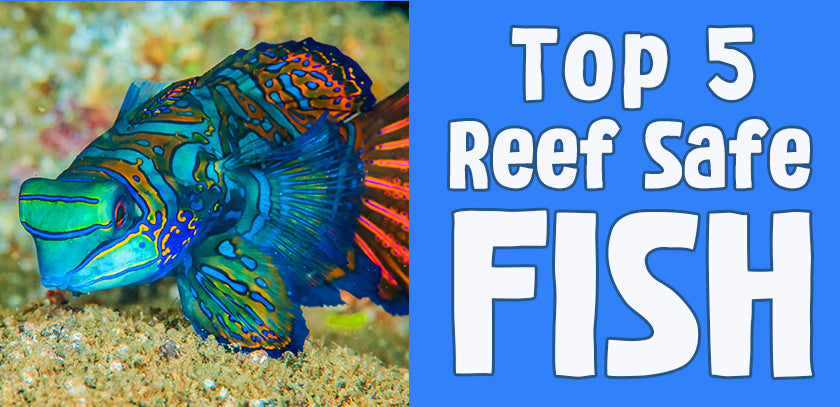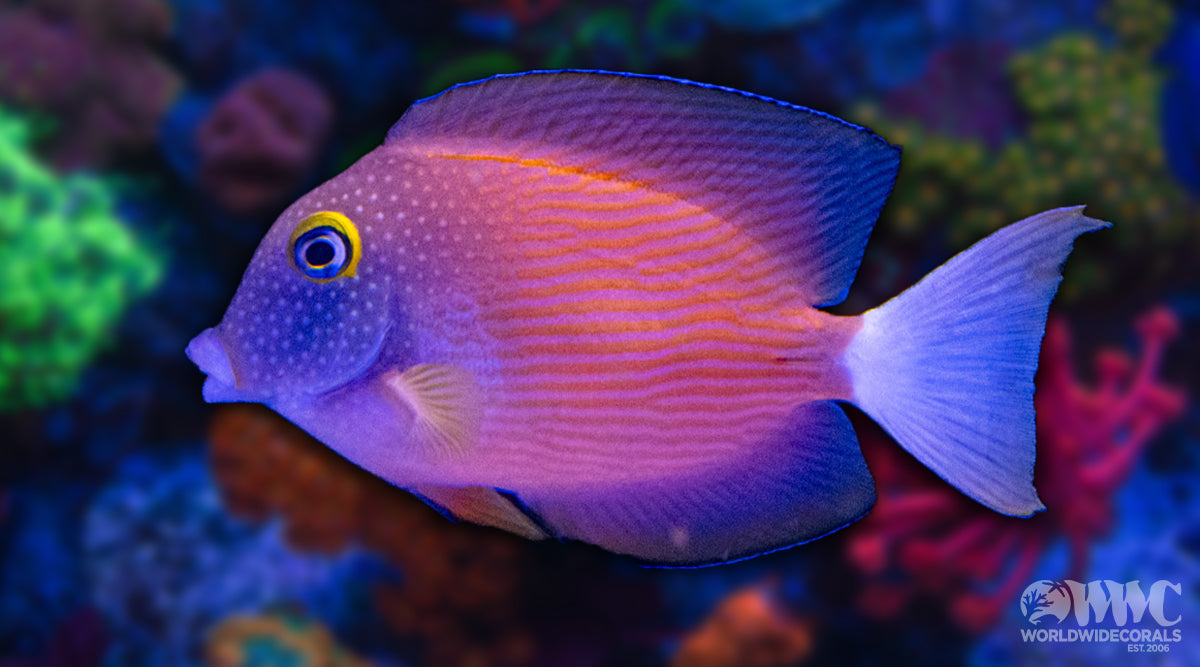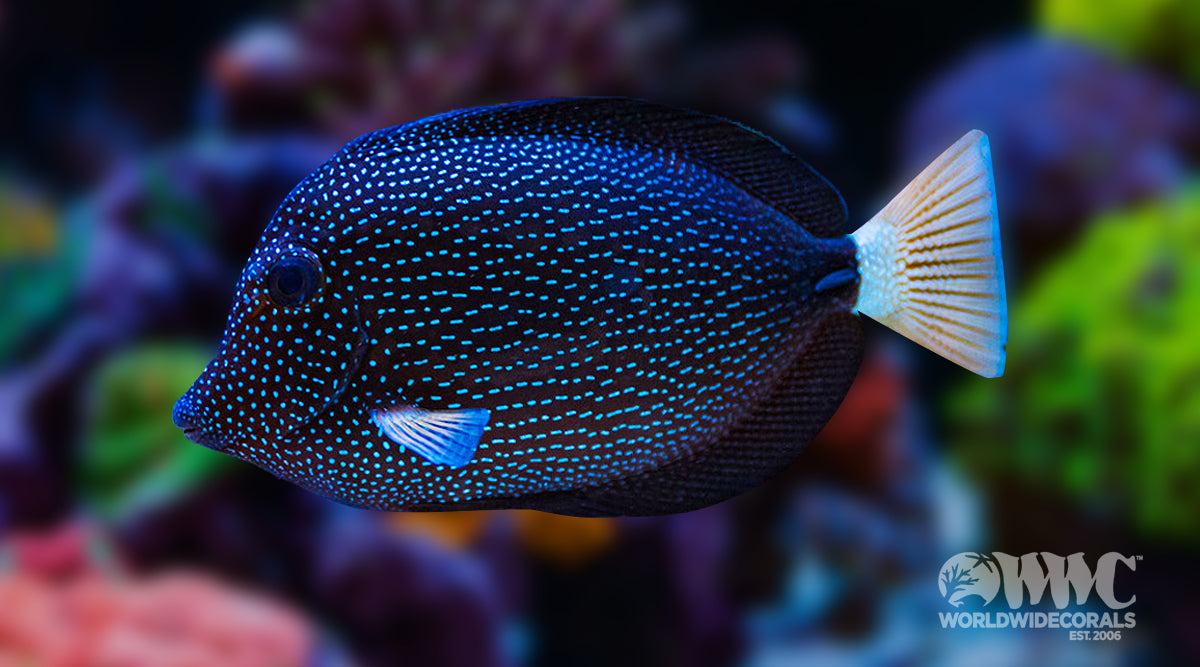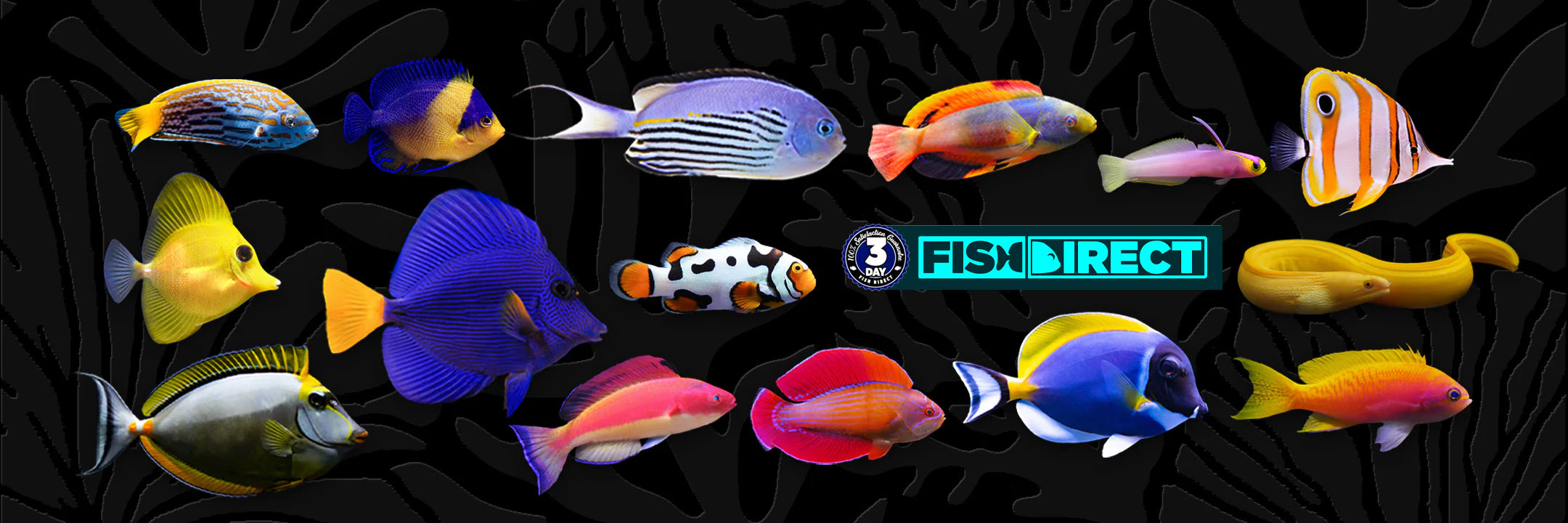Are you looking for some ideas on what fish to add next to your reef tank? This article will talk about 5 great fish to consider adding to your aquarium in 2023.
The five fish listed below were selected using the following criteria- color, personality, temperament, compatibility in a reef tank, and sustainability. Everyone wants to see beautifully colored fish in the aquarium and with some of these fish you might have to take a closer look or spend some time observing them to see their true colors. Fish are fun to watch and several of the species on this list have endearing personalities and interesting relationships that will delight aquarium hobbyists at any level. In general, the following fish will get along well in most reef tanks, just make sure you check a compatibility chart and keep tankmate size in mind before you buy. Another key characteristic of the fish on this list is that they are all considered to be reef safe- no one wants to add a fish that will snack on their corals. In 2023 there is a growing trend of supporting aquaculture and being more considerate of the impact that we, as hobbyists, have on the wild reefs. The species of fish on this list are either hardy fish from thriving populations or are available as a captive bred option.
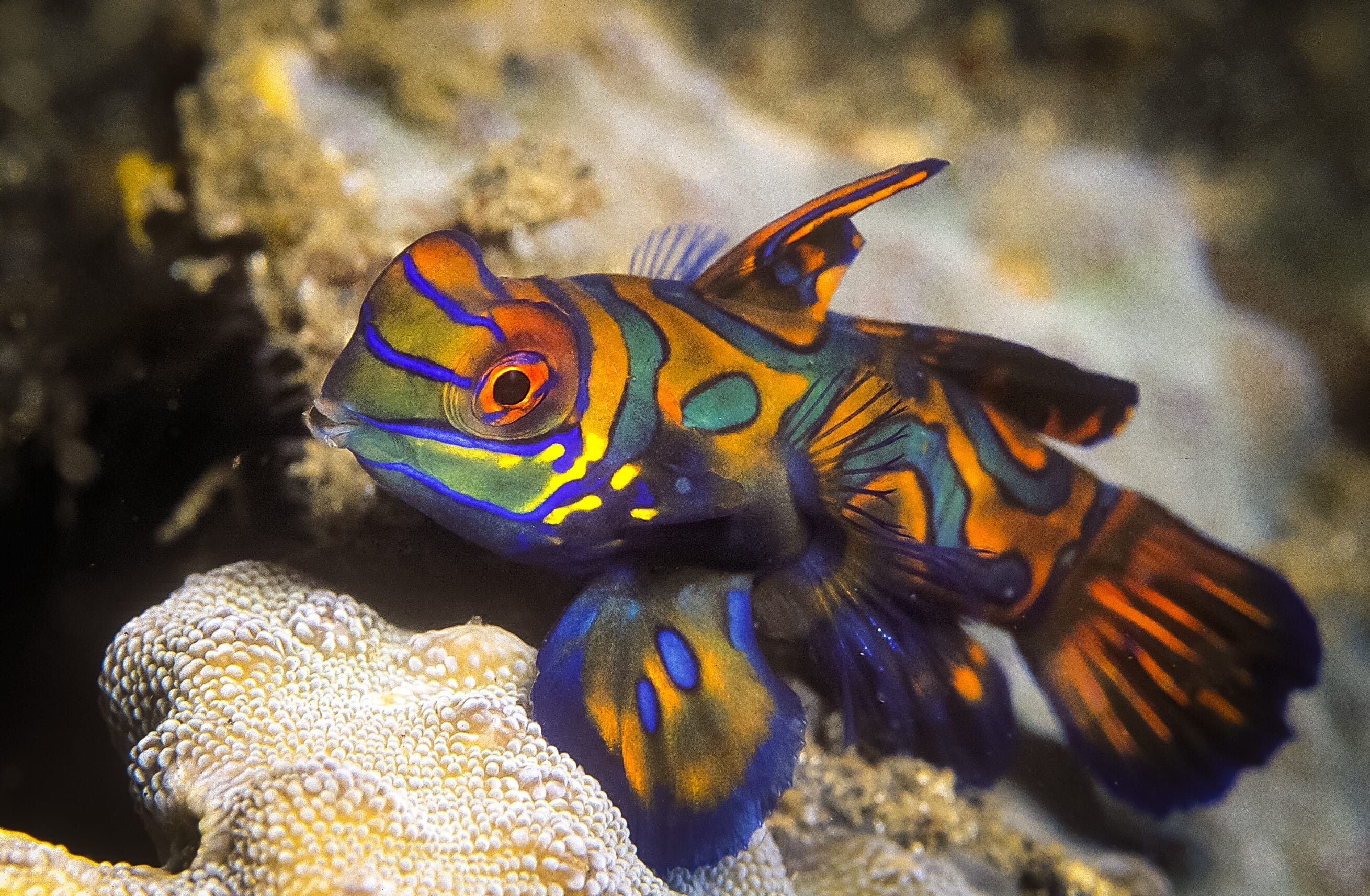
1. Mandarin Goby
The Mandarin Goby is an exquisite looking goby. Watch one closely as it glides along the reef scape and you can see the kaleidoscope of colors it boasts. In the past, beginning hobbyists were told to avoid adding one of these colorful fish to their tanks, as they were hard to feed and very picky eaters, but one big thing has changed - aquaculture. Many of the mandarins available for sale are captive bred which means the struggles of feeding and the strain on the wild populations has been significantly reduced. Captive bred mandarins are raised on frozen and pellet food and once brought into home tanks they quickly take to eating, without having a thriving population of copepods needing to be readily available. That's not to say they won't enjoy the enriching nourishment the copepods provide. In fact, it is quite entertaining to watch them glide around looking for a snack, making little kissy faces with their mouths as they slurp up a pod. Aside from the entertainment they provide, another reason they should be added to your tank is because of how peaceful they are. For the most part, they hang out on the rockwork among the corals and along the substrate and very rarely interact with other fish, with the exception of a mated mandarin pair. These gobies are a great option for someone who is looking to add a goby to the tank but doesn't want to run the risk of a sand sifter spitting substrate on their corals. Are you sold on a mandarin? What if I told you that you can get the captive bred mandarins as babies that are smaller than the size of a dime. Not only are they adorable, but they are a perfect fit for a nano reef and are one fish you can add as a baby that won't need a tank upgrade down the road as it grows. Even as adults, mandarins don't typically get large than a few inches.

2. Bangaii Cardinalfish.
If you are looking for a peaceful addition to add to any reef tank form the nano tanks up to the large reef tanks, look no further than the Bangaii Cardinalfish. These fish have been around for ages, and there is something to be said for a classic. These small fish get along in groups of their own species as well as with other species of fish you might have and their black and white stripes make them easy to spot in your tank. Most fish will spend time throughout the water column, but these cardinals tend to spend most of their time hanging out in the top half of the water column. Since these classic fish have been in the hobby for some time, it is easy to find individuals that are captive bred, either by aquaculture companies or by local hobbyists. The Bangaii Cardinal, also known as the Kaudern's Cardinal, is one species that, when established in your tank, will reproduce, which is a treat, especially when you keep them with a Longspine Urchin. Bangaii Cardinals are mouth brooders and for the first 3 weeks of their life, you can observe them in the male's mouth. If that weren't interesting enough, once they graduate from the safety of their dad's mouth, they seek refuge among the spines of the Longspine Urchins. It is a fascinating relationship to watch play out. Most of the cardinals that are available will eat frozen and pellet foods, as well as live brine shrimp. Live brine shrimp are a perfect way to ensure the young fish get the nutrition they need as you are able to gut load the brine before you feed them to the Bangaii Cardinal young. If you are looking for a peaceful schooling fish to fill the niche of your upper water column, then look no further than the Bangaii Cardinal.
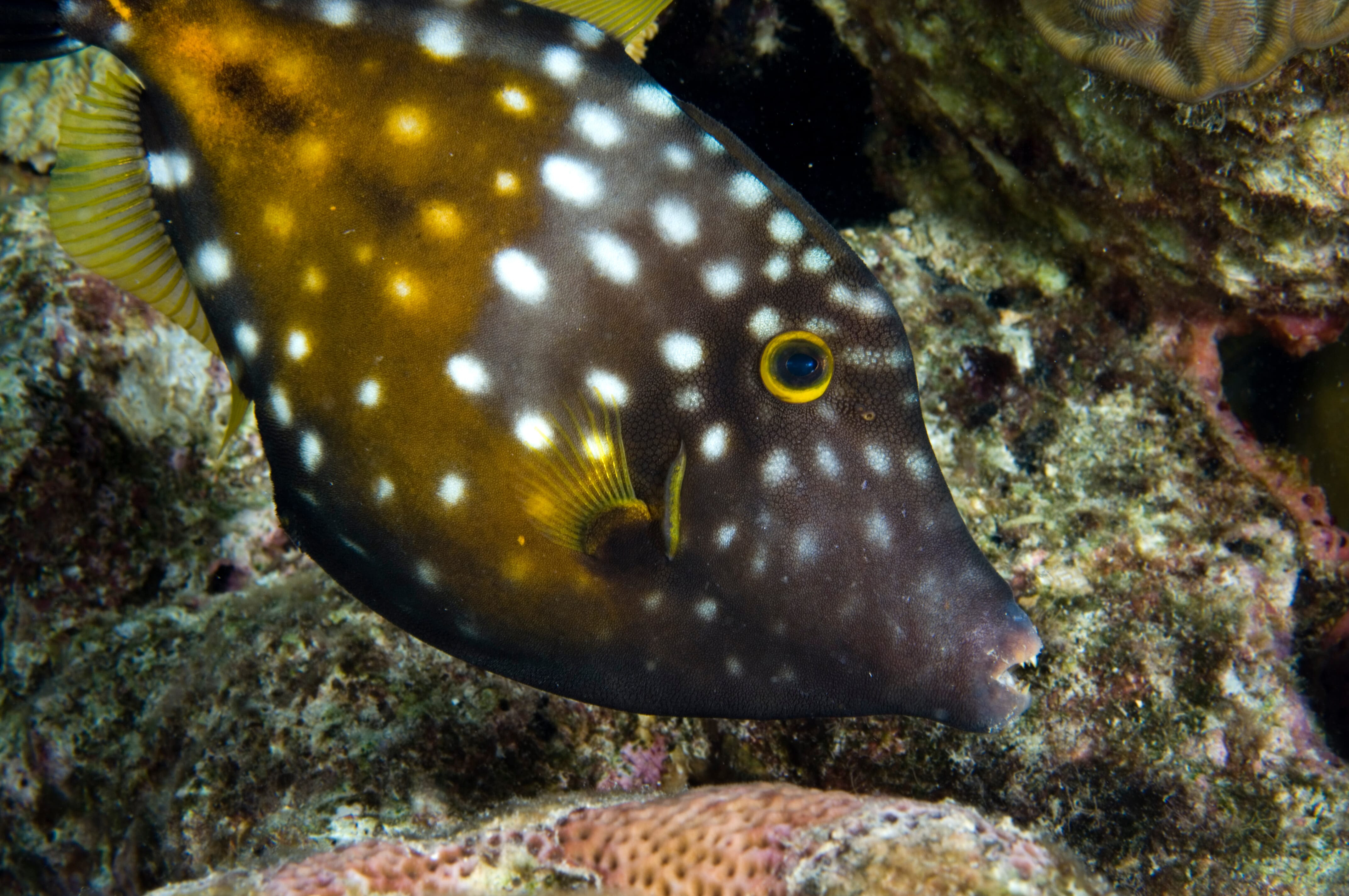
3. White Spotted Filefish
If you are looking for a charismatic, interactive fish that is reef safe but struggling to find one, you might want to consider the White Spotted Filefish. Unlike the aiptasia eating filefish, there is almost no risk of the White Spotted Filefish snacking on your corals. This is another species that stays fairly small, only growing to about 3 inches as an adult, and what they lack in size they make up for in their personalities. Many aquarists have noticed how these filefish are quick to recognize people, especially those who feed them. Like some species of puffer and boxfish, these little filefish have been known to spit water as a means of begging for food. The White Spotted Filefish are omnivores and as such, their diet should consist of a variety of seaweed and meaty foods in the form of frozen, live, or pellets. Their white spots stand out along their dark colored bodies, but that isn't their only color, they are able to change their color and pattern from the white spots on a dark background to nearly a solid olive green depending on their surroundings and their mood. White Spotted Filefish get along well with their own species and can be kept in groups. They will work well in smaller numbers in nano tanks but also in larger reef tanks. As with the fish listed above, the White Spotted Filefish is available as a captive bred species, giving you the peace of mind that your reef isn't coming at the expense of the wild ones. If you are looking for a fish with big personality, then the White Spotted Filefish might be for you.

4. Yellow Watchman Goby
The Yellow Watchman Goby is a great example of a colorful fish that would go well in reef tanks of all sizes. They are bright yellow with iridescent blue spots along their body. As they spend most of their time in the bottom half of the water column, especially on the sand bed, they will easily stand out in a reef tank. While they get along well with other fish, if multiples of the same species are kept in the same tank, they need to have enough space. During feeding time, these brightly colored fish will swim upwards, grabbing food out of the water column before retuning down to their burrows. They are carnivores and will do well on a mix of meaty frozen foods and pellets. One really interesting thing about the Yellow Watchman Goby is the symbiotic relationship they will form with certain species of pistol shrimp. The shrimp will build and care for the burrow and in return, the goby will guard the burrow, protecting it from predators and ensuring the shrimp gets food. Occasionally, the gobies and shrimp can be purchased as a pair, but it should be noted that adding a shrimp to a tank with a Yellow Watchman Goby does not always ensure they will pair up. Since the Yellow Watchman Goby will live in a burrow, it is important to make sure the sand bed is the appropriate depth. If you prefer colors other than yellow, another option would be the Pink Spotted Watchman Goby, which has all the same great characteristics as the Yellow Spotted Watchman, but has a lighter pearl colored body with pink and orange spots along with iridescent blue rings on its dorsal fins. Either one you choose, be cautious, as these fish are notorious jumpers, so a secure fitting tank lid is an absolute must!
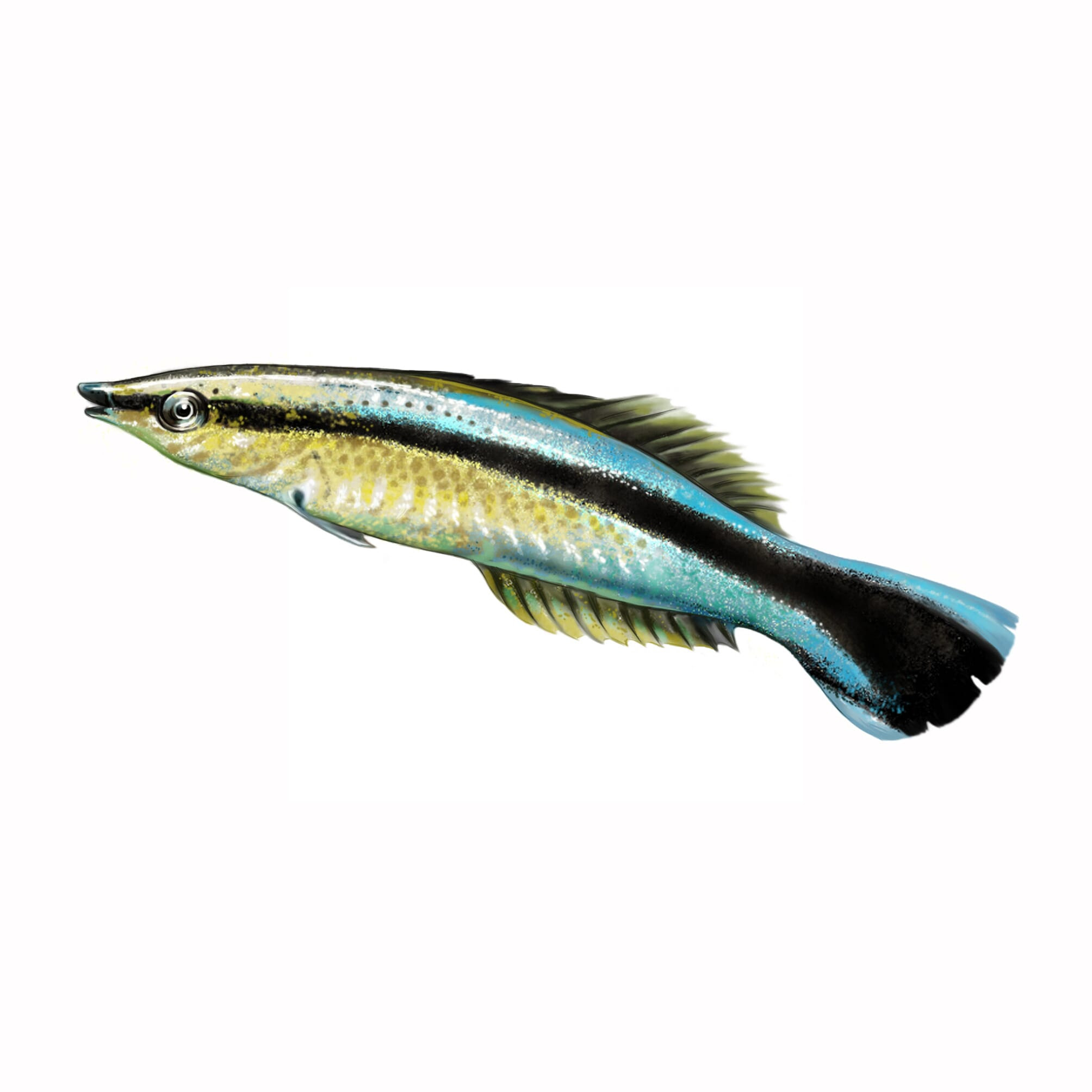
5. Hawaiian Cleaner Wrasse
A unique fish that is just starting to show up in stores is the Hawaiian Cleaner Wrasse. Unlike the common cleaner wrasse, the Hawaiian Cleaner has a fading mix of light and dark blues, yellows, and purples along its body making it a delight to watch swimming in any tank. You can find wild caught Hawaiian Cleaner Wrasses, which can be tricky to get eating, so if possible, look for captive bred bred individuals. If you do find wild caught Hawaiian Cleaner, ask and make sure it is eating before bringing it home. A mix of frozen foods, live brine, liquid concentrates, and pellet food is a good way to ensure the wrasse is getting the variety it needs. These peaceful fish will get along great with most tank inhabitants, but don't be surprised if you see them nipping at other fish. As their name suggests, this picking behavior is natural as they are likely cleaning and removing dead skin, and parasites from the other fish. A great team player, the Cleaner Wrasse doesn't need a sand bed to burrow itself in at night, however they will create a cocoon of mucus so don't be alarmed if you spot them looking a bit slimy at night.
When looking for a new addition to your reef tank, the options available can sometimes be a bit overwhelming. As you are looking around at your local fish store (LFS), or online, the urge to impulse buy the colorful, friendly fish you find is strong (I've been there, I know how real the struggle is), but hang tight, do a bit of research and consider if one of these five fish might be exactly what you are looking for.

